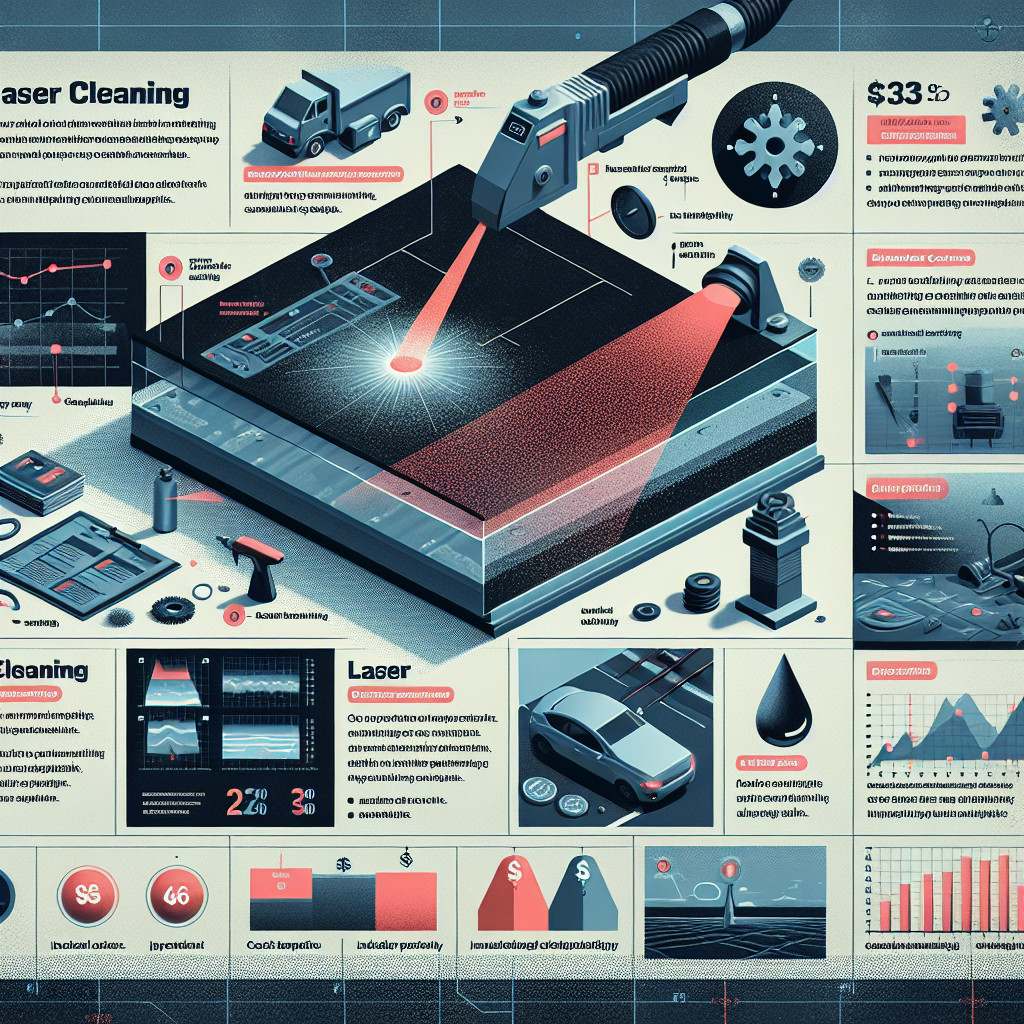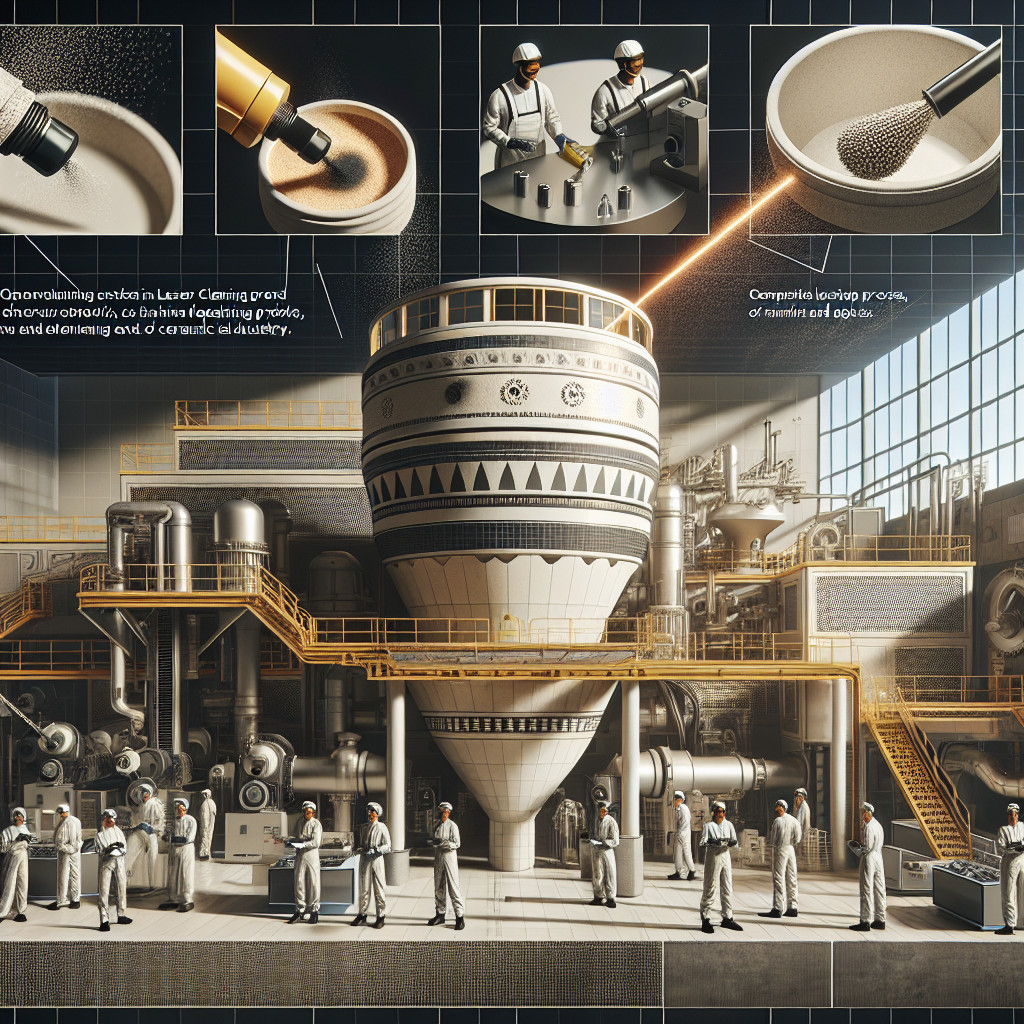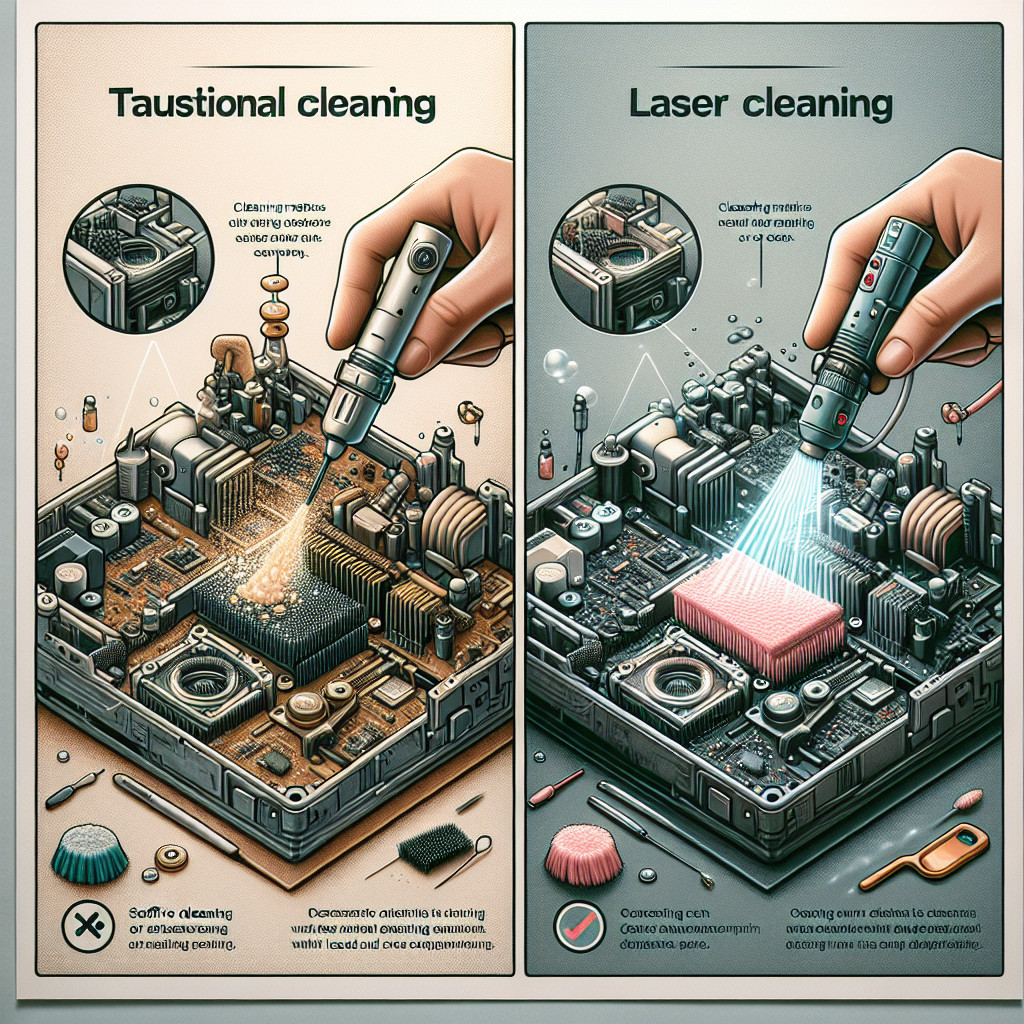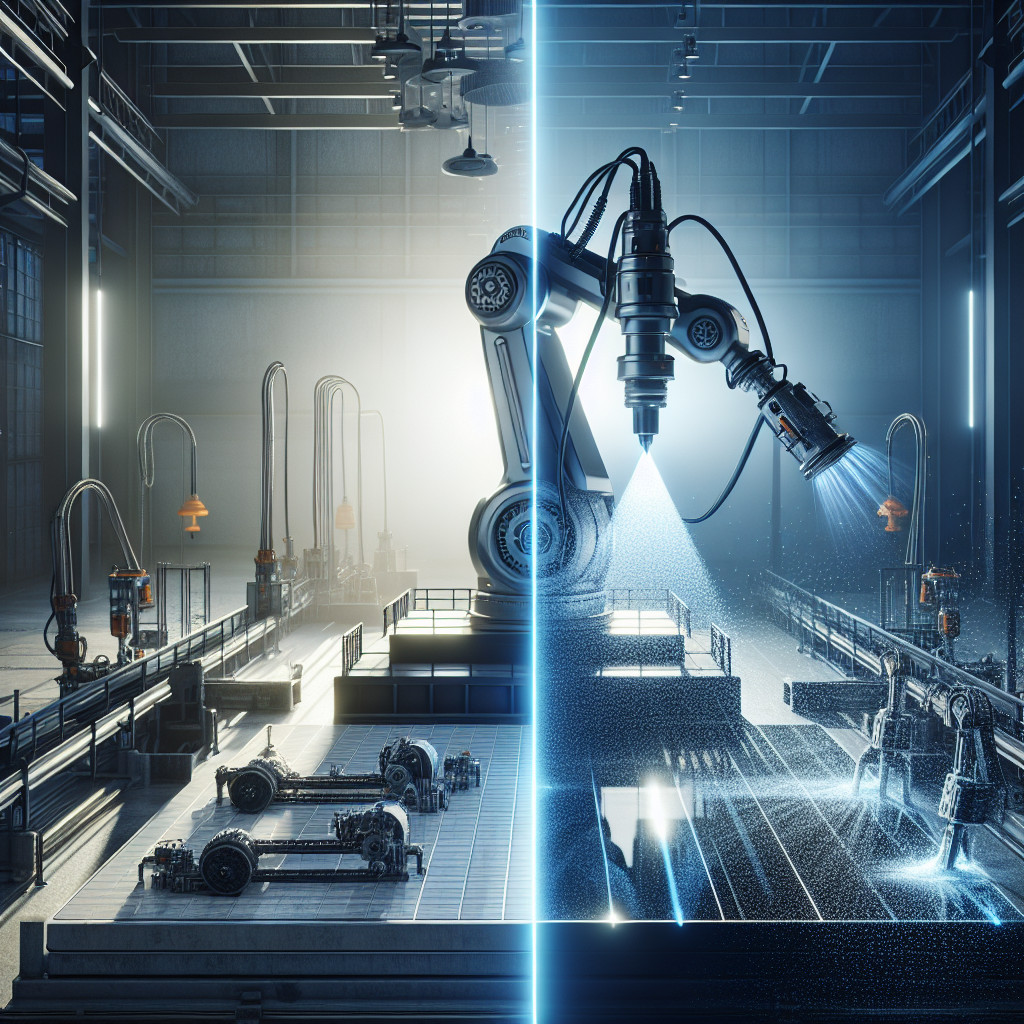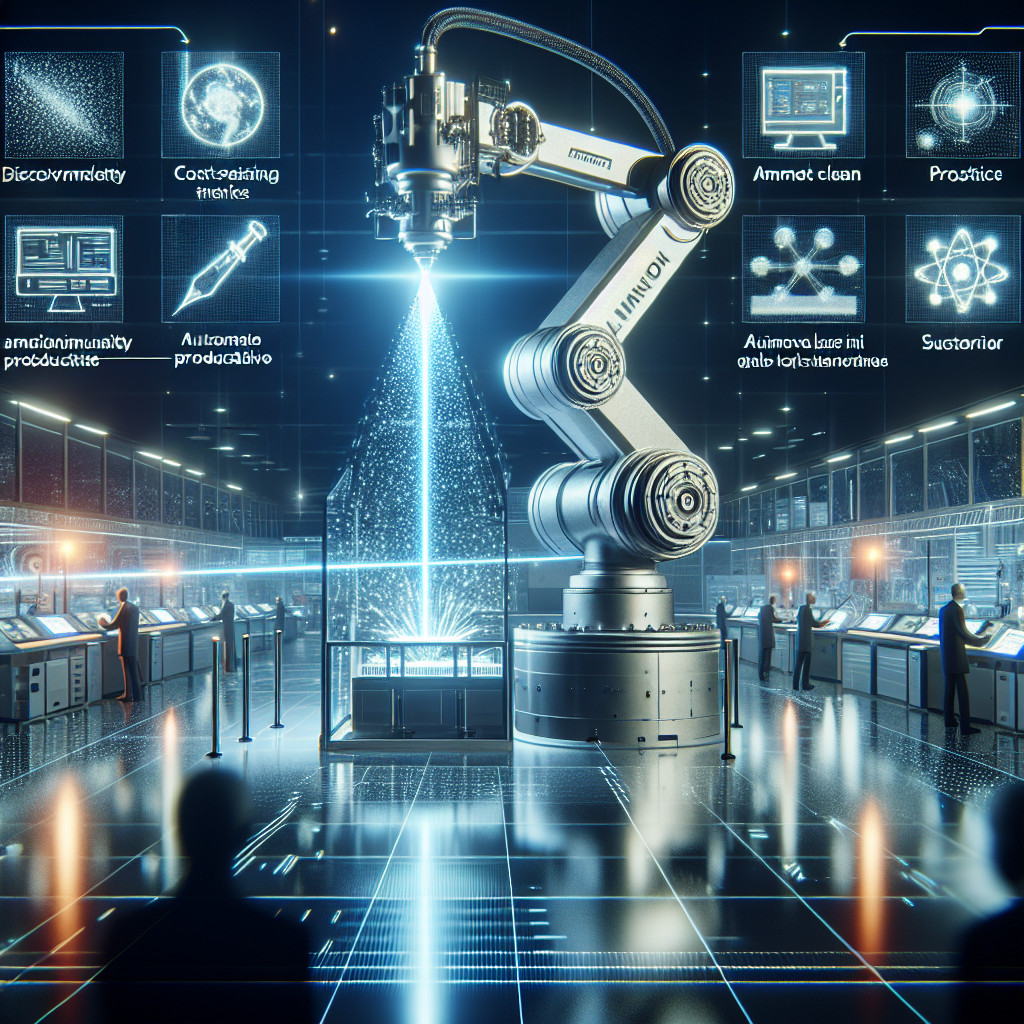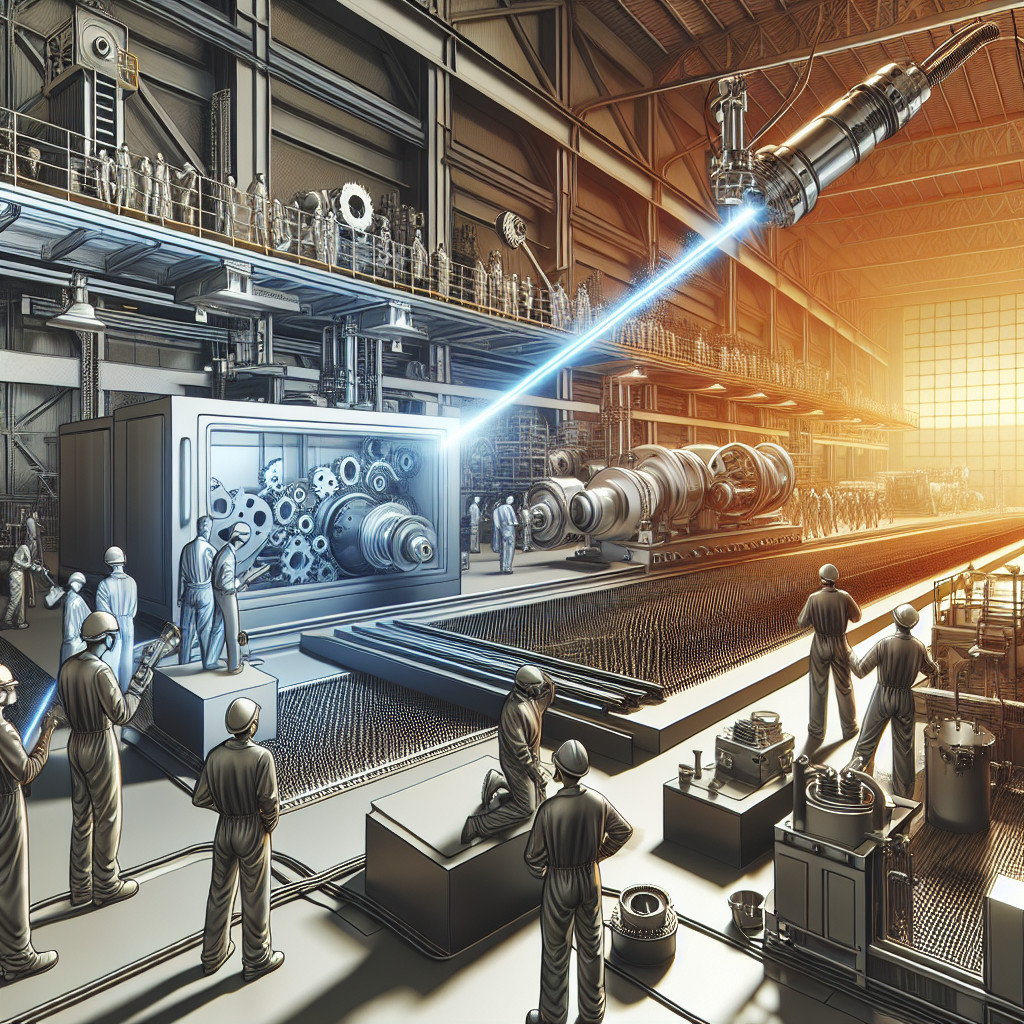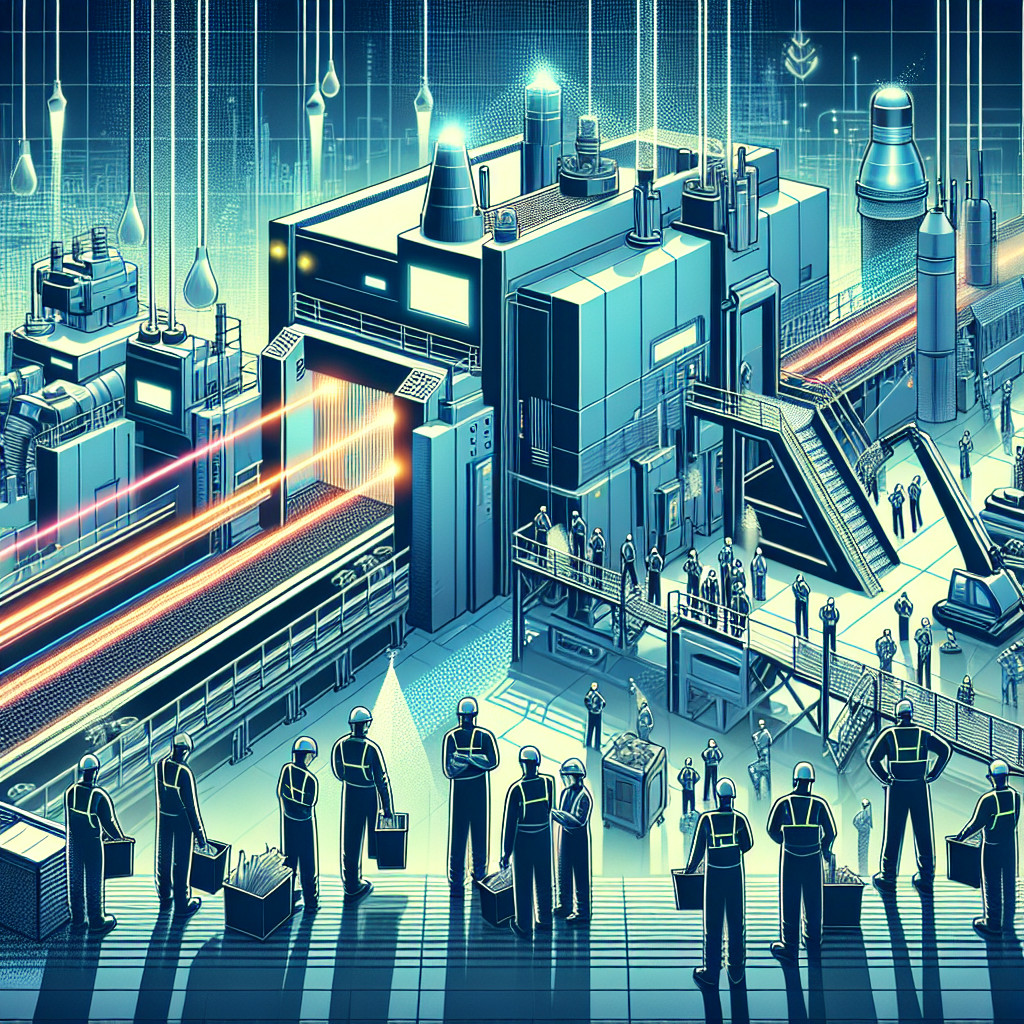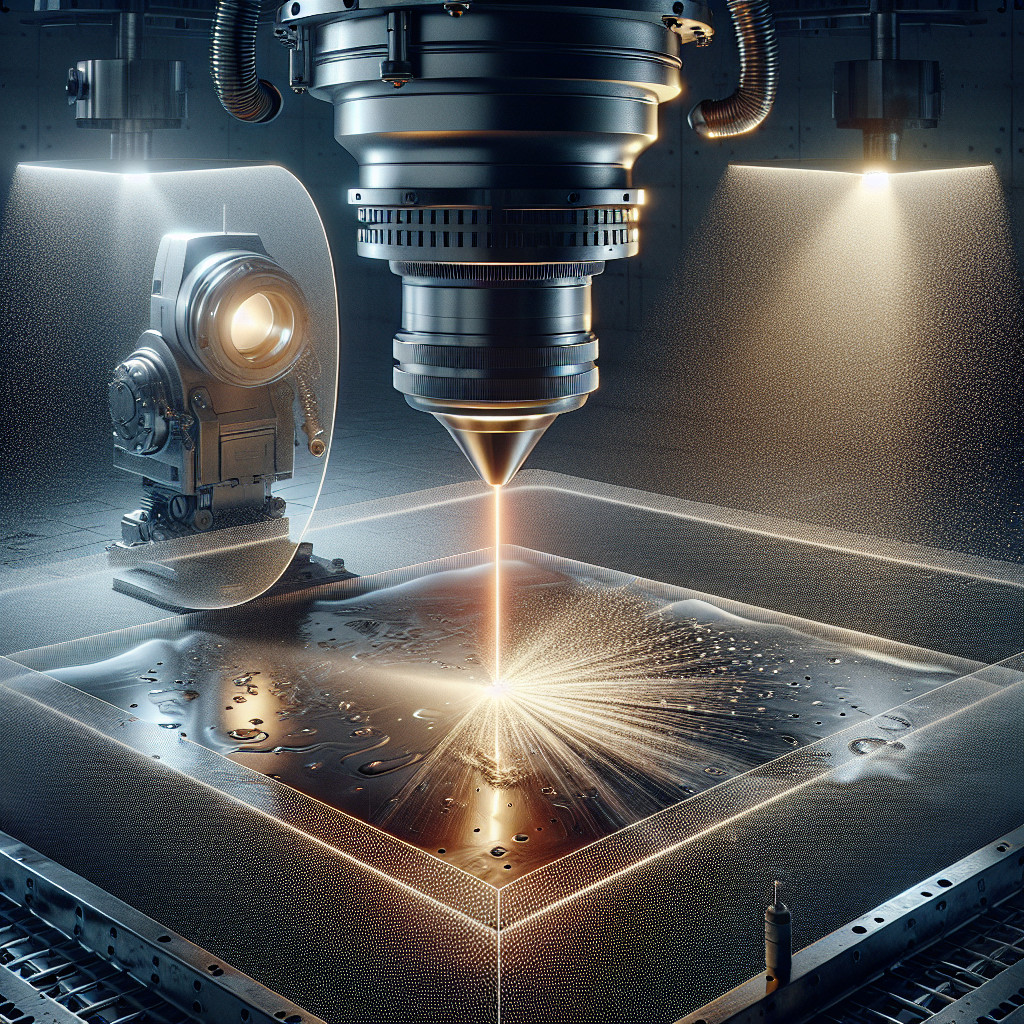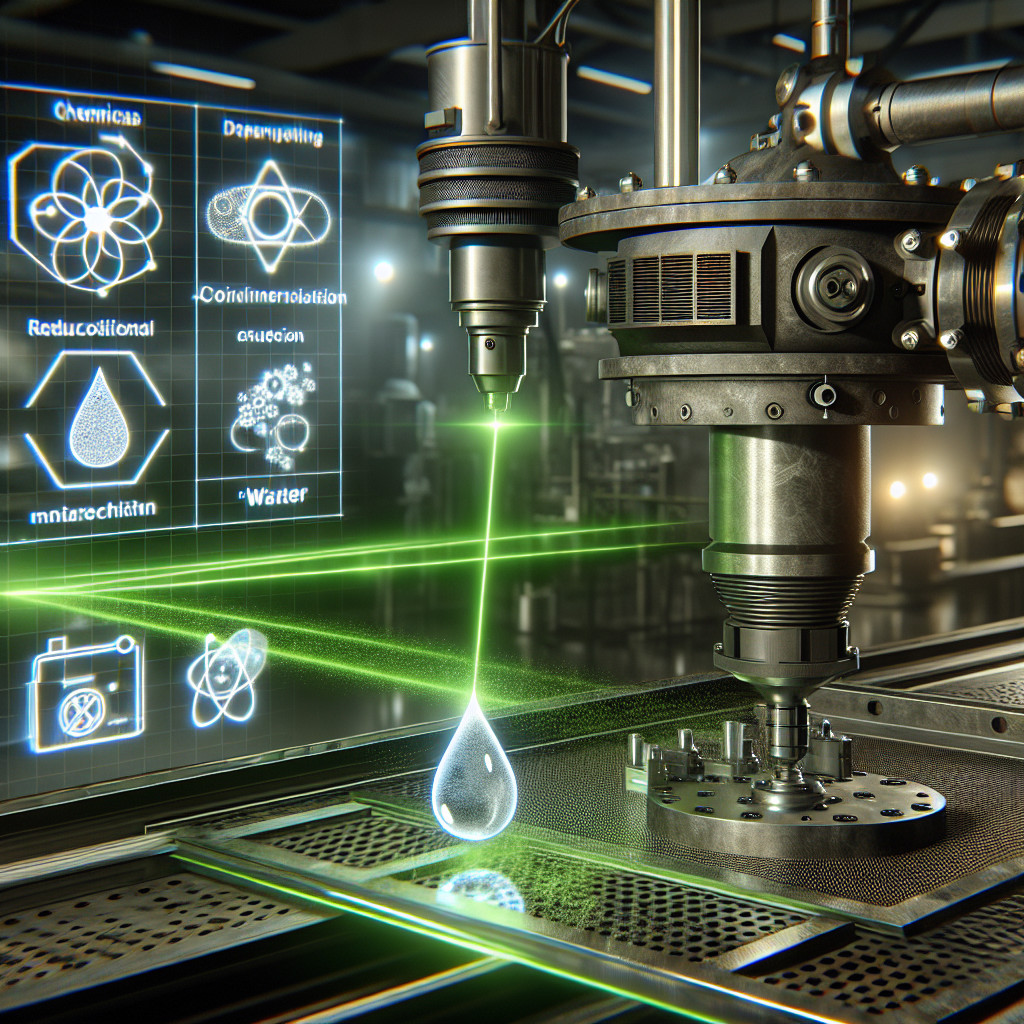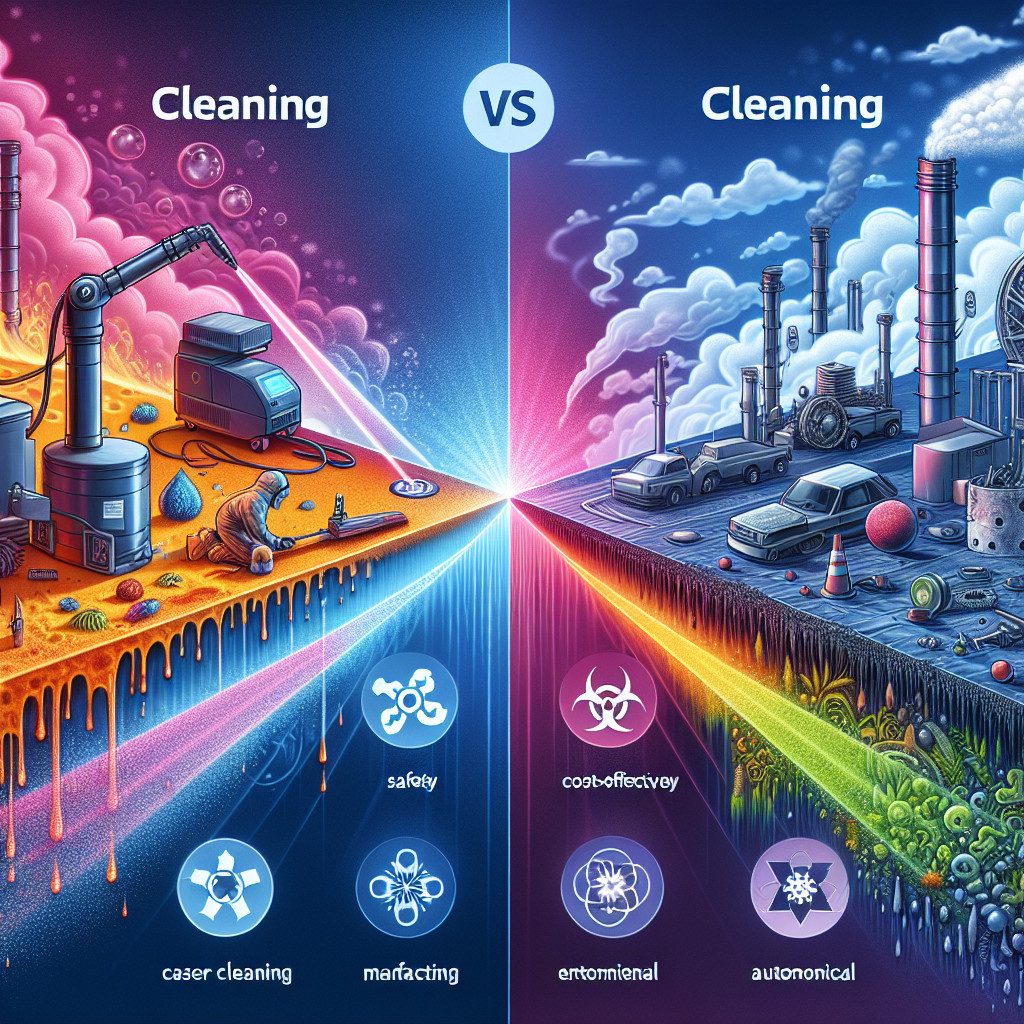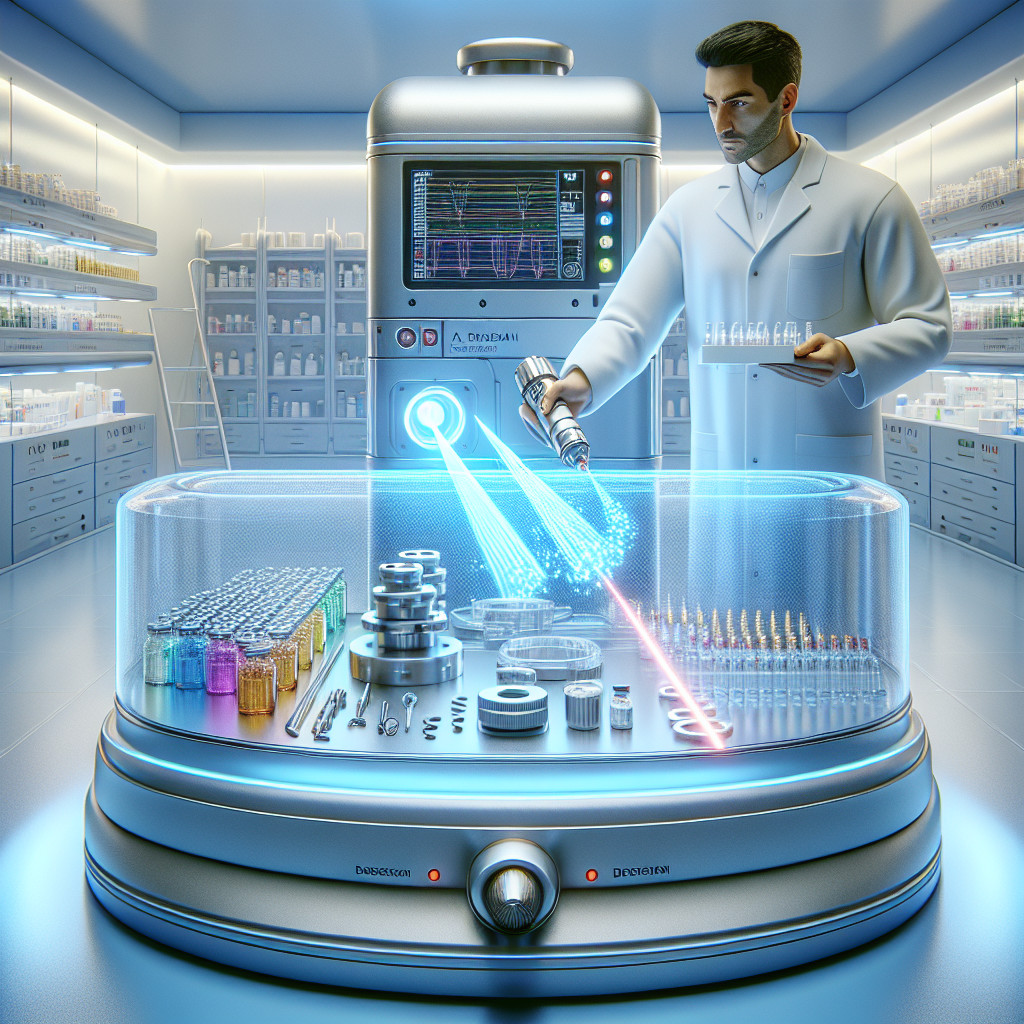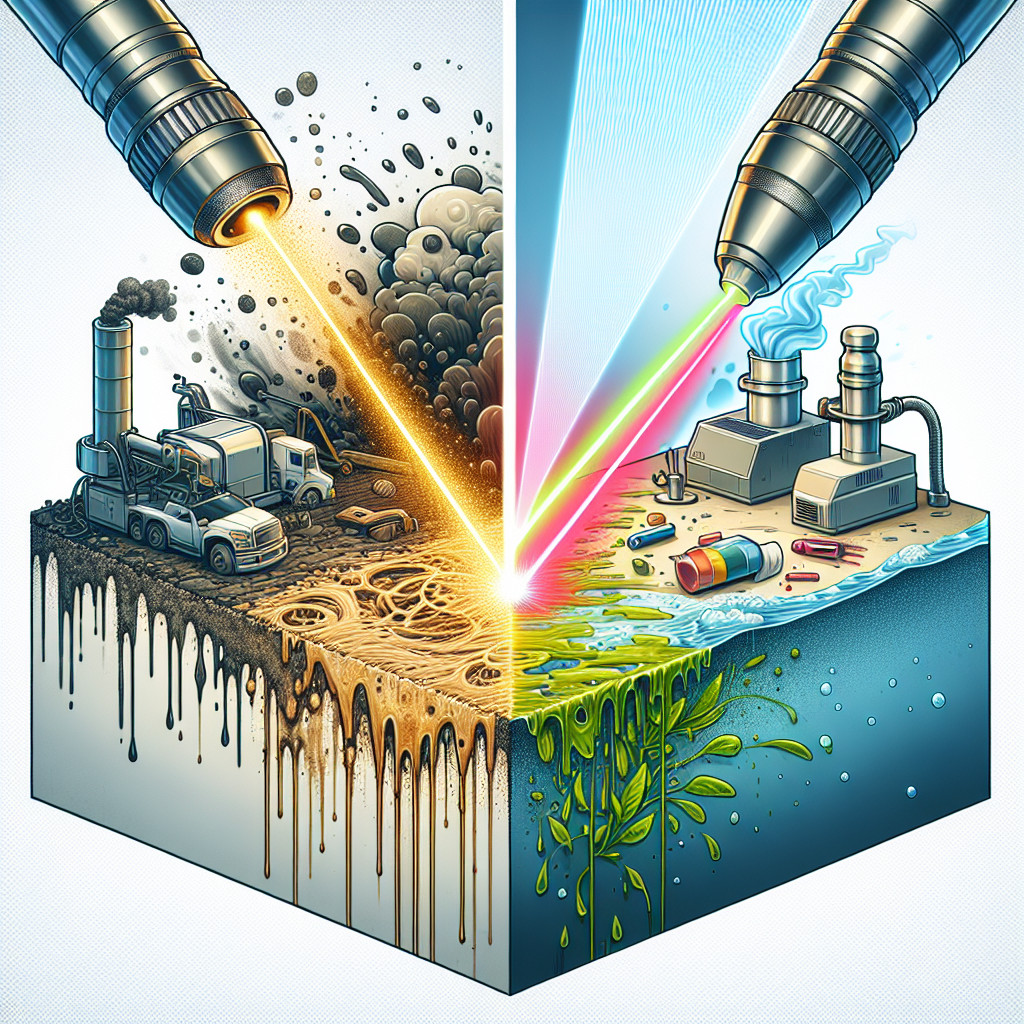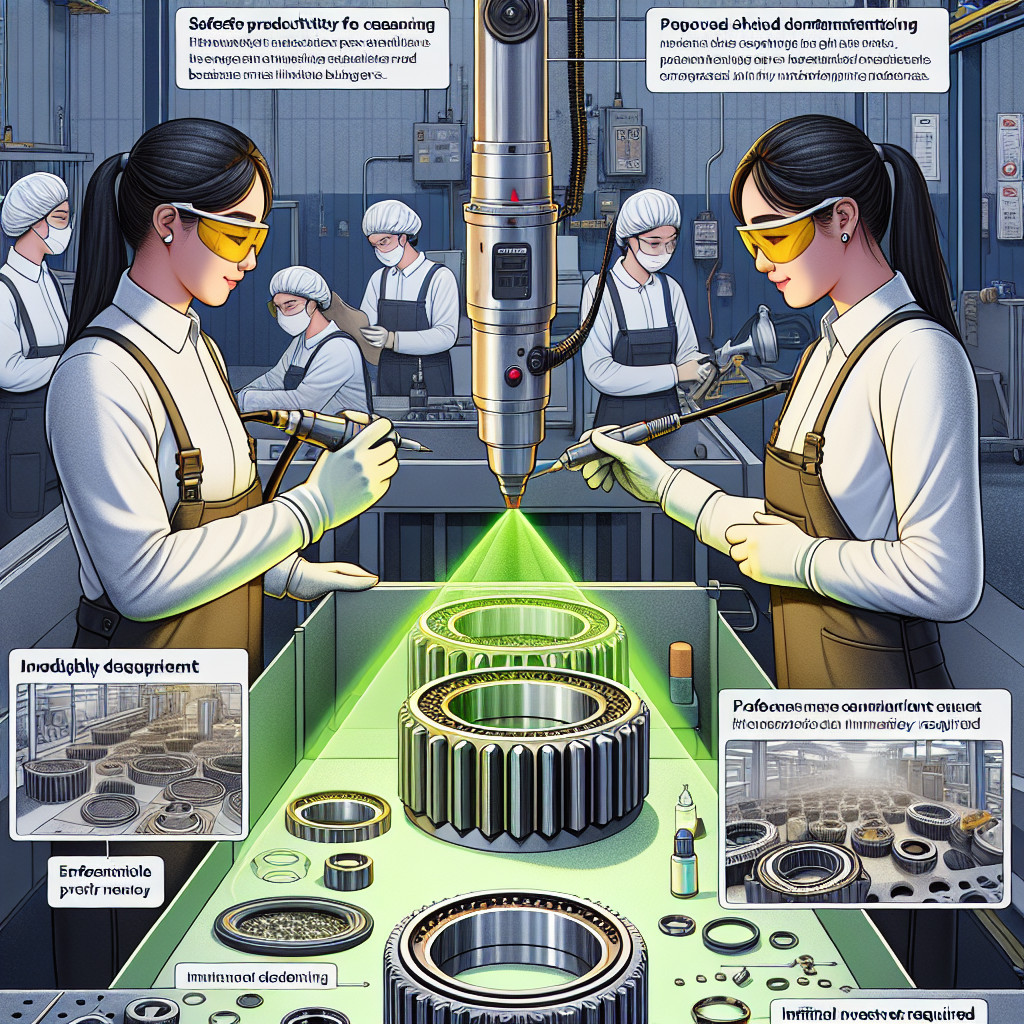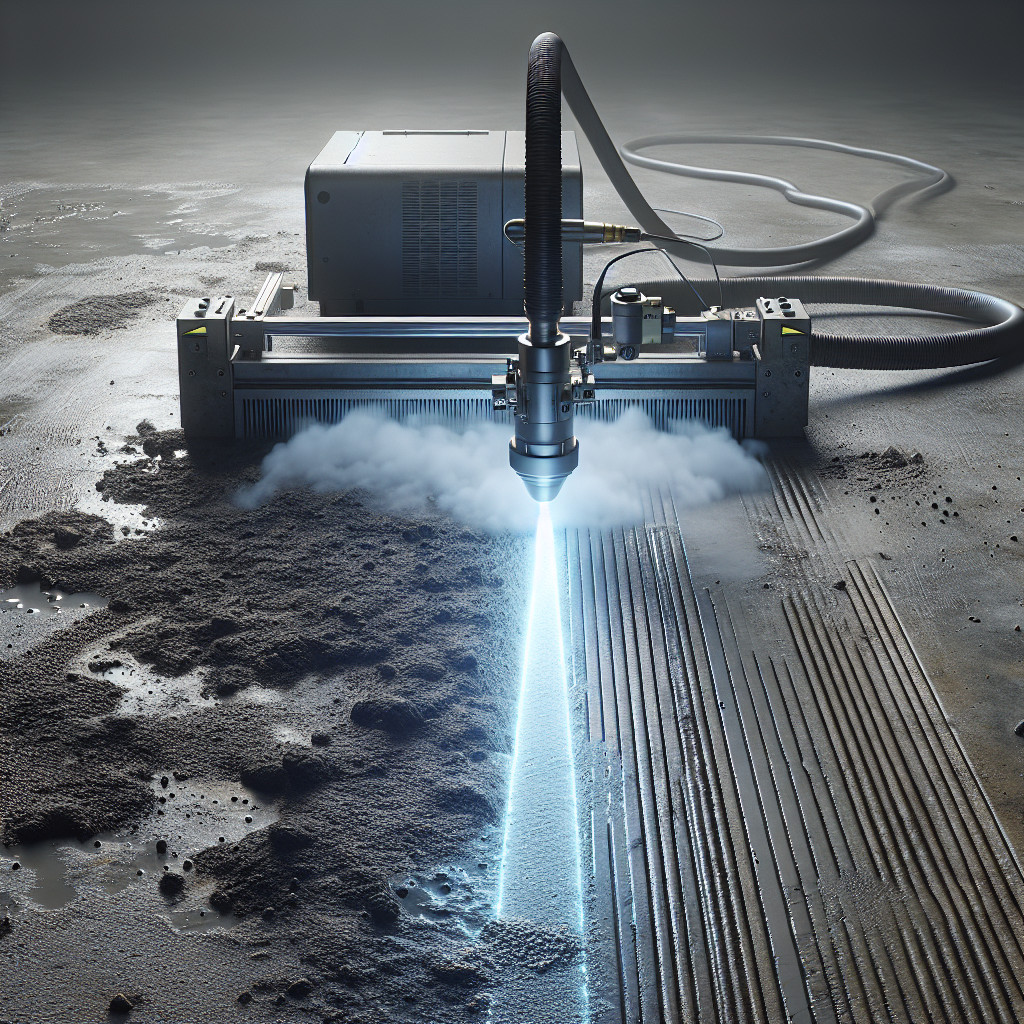
- Benefits of using laser cleaning for renewing concrete surfaces
- Environmental impact of laser cleaning on concrete surfaces
- Training and certification requirements for operators using laser cleaning on concrete surfaces
- Impact of laser cleaning on the texture of concrete surfaces
- Advantages of laser cleaning for preparing concrete surfaces for repairs or renovations
- Impact of laser cleaning on the overall lifespan of concrete surfaces
- Comparison of laser cleaning with traditional cleaning methods
- Challenges and limitations of using laser cleaning for concrete surface renewal
Benefits of using laser cleaning for renewing concrete surfaces
Concrete surfaces are prone to dirt, grime, and other contaminants that can make them look old and worn out. Traditional cleaning methods such as pressure washing or chemical cleaning can be effective, but they can also be time-consuming and potentially damaging to the concrete surface. Laser cleaning offers a modern and efficient solution for renewing concrete surfaces without the drawbacks of traditional methods.
Here are some of the :
1. Efficiency: Laser cleaning is a highly efficient method that can remove dirt, grime, and other contaminants from concrete surfaces quickly and effectively. The laser beam can target specific areas without affecting the surrounding surface, making it a precise and efficient cleaning method.
2. Environmentally friendly: Unlike chemical cleaning methods, laser cleaning does not require the use of harsh chemicals that can be harmful to the environment. It is a clean and eco-friendly method that uses only light energy to clean concrete surfaces.
3. Non-abrasive: Laser cleaning is a non-abrasive method that does not damage the concrete surface. It can remove contaminants without causing any scratches or abrasions, preserving the integrity of the concrete surface.
4. Versatility: Laser cleaning can be used on a variety of concrete surfaces, including floors, walls, and sidewalks. It is a versatile method that can be customized to suit different cleaning needs.
5. Cost-effective: While laser cleaning may have a higher upfront cost compared to traditional cleaning methods, it can be more cost-effective in the long run. Its efficiency and precision can save time and labor costs, making it a cost-effective solution for renewing concrete surfaces.
Overall, laser cleaning offers a modern and efficient solution for renewing concrete surfaces. Its efficiency, environmental friendliness, non-abrasiveness, versatility, and cost-effectiveness make it a superior choice for cleaning and renewing concrete surfaces.
#laser #cleaning #concrete #renewal
Keywords: laser cleaning, concrete surfaces, renewing, efficiency, environmentally friendly, non-abrasive, versatility, cost-effective
Long-tail phrases: , advantages of laser cleaning for concrete renewal, why choose laser cleaning for concrete surfaces.
Environmental impact of laser cleaning on concrete surfaces
Impact on air quality
One of the main concerns with laser cleaning is its impact on air quality. The process can generate emissions of particulate matter and volatile organic compounds (VOCs), which can contribute to air pollution. It is important to use proper ventilation systems and filters to minimize these emissions and protect the environment.
Energy consumption
Laser cleaning requires a significant amount of energy to operate, which can contribute to greenhouse gas emissions and climate change. It is important to consider the source of this energy and explore ways to reduce energy consumption through efficiency improvements and renewable energy sources.
Waste generation
Another environmental impact of laser cleaning is the generation of waste materials, such as removed contaminants and coatings. Proper disposal of these materials is essential to prevent contamination of soil and water sources. Recycling and reusing materials whenever possible can help reduce waste generation.
Conclusion
Overall, laser cleaning offers many benefits for concrete surface maintenance, but it is important to consider its environmental impact. By implementing proper measures to minimize air emissions, reduce energy consumption, and manage waste materials responsibly, we can ensure that laser cleaning remains a sustainable and environmentally friendly option for surface cleaning.
| Environmental Impact | Concerns |
|---|---|
| Air Quality | Particulate matter, VOC emissions |
| Energy Consumption | Greenhouse gas emissions |
| Waste Generation | Contaminants, coatings |
#environment #laser #cleaning #concrete #surfaces #airquality #energyconsumption #wastegeneration
Environmental impact, laser cleaning, concrete surfaces, air quality, energy consumption, waste generation, sustainable cleaning, environmental concerns, surface maintenance, air emissions, greenhouse gas emissions, waste disposal, recycling materials, renewable energy sources.
Training and certification requirements for operators using laser cleaning on concrete surfaces
Training Requirements
Operators using laser cleaning on concrete surfaces must undergo comprehensive training to ensure they have the necessary skills and knowledge to operate the equipment safely and effectively. Training programs typically cover topics such as:
- Safety procedures for using laser cleaning equipment
- Proper handling and maintenance of the equipment
- Understanding of laser technology and its applications
- Techniques for cleaning different types of concrete surfaces
Certification Requirements
Once operators have completed the necessary training, they must obtain certification to demonstrate their competence in using laser cleaning technology. Certification programs typically involve a combination of written exams and practical assessments to ensure operators have the skills and knowledge required to operate the equipment safely and effectively.
Table of Certification Programs
| Certification Program | Requirements | Duration |
|---|---|---|
| Laser Cleaning Operator Certification | Completion of training program, passing written exam and practical assessment | 1 day |
| Advanced Laser Cleaning Operator Certification | Previous certification, additional training, passing advanced written exam and practical assessment | 2 days |
Operators must renew their certification periodically to ensure they stay up-to-date with the latest technology and safety procedures.
Conclusion
Training and certification are essential for operators using laser cleaning on concrete surfaces to ensure safety and efficiency. By completing comprehensive training programs and obtaining certification, operators can demonstrate their competence and expertise in using this technology.
#laser cleaning, concrete surfaces, training, certification, operators, safety procedures, technology, maintenance, assessments, competence, expertise, efficiency.
frazy kluczowe:
– Training and certification requirements for operators using laser cleaning on concrete surfaces
– Laser cleaning technology for concrete surfaces
– Safety procedures for laser cleaning operators
– Certification programs for laser cleaning operators
– Efficient cleaning techniques for concrete surfaces
Impact of laser cleaning on the texture of concrete surfaces
🔹 Laser cleaning can significantly improve the texture of concrete surfaces by removing surface contaminants and restoring the original appearance of the concrete.
🔹 The process is non-abrasive and does not require the use of harsh chemicals, making it environmentally friendly.
🔹 Laser cleaning can be used on a variety of concrete surfaces, including floors, walls, and countertops.
🔹 The precision of laser cleaning allows for targeted removal of stains and dirt, resulting in a more uniform and aesthetically pleasing surface.
Overall, the is positive. This method offers a safe and effective way to clean and restore concrete surfaces without causing any damage. As the construction industry continues to embrace sustainable and eco-friendly practices, laser cleaning is likely to become an increasingly popular choice for cleaning concrete surfaces.
#laser cleaning #concrete surfaces #texture improvement #environmentally friendly #construction industry
frazy kluczowe:
– Impact of laser cleaning on concrete surface texture
– Benefits of laser cleaning for concrete surfaces
– Eco-friendly cleaning methods for concrete surfaces
– Laser cleaning for construction projects
– Improving the appearance of concrete surfaces with laser cleaning
Advantages of laser cleaning for preparing concrete surfaces for repairs or renovations
Here are some of the key advantages of using laser cleaning for preparing concrete surfaces:
1. Efficiency: Laser cleaning is a highly efficient method for removing dirt, grime, and other contaminants from concrete surfaces. The laser beam can quickly and effectively clean large areas, saving time and labor compared to manual methods.
2. Precision: Laser cleaning allows for precise control over the cleaning process, ensuring that only the surface contaminants are removed without damaging the underlying concrete. This precision is especially important for delicate or intricate surfaces.
3. Environmentally friendly: Laser cleaning is a non-contact, chemical-free process that produces minimal waste and emissions. This makes it a more environmentally friendly option compared to traditional cleaning methods that may use harsh chemicals or produce harmful fumes.
4. Cost-effective: While the initial investment in laser cleaning equipment may be higher than traditional cleaning methods, the long-term cost savings can be significant. The efficiency and precision of laser cleaning can reduce labor costs and minimize the need for expensive repairs or replacements.
5. Versatility: Laser cleaning can be used on a wide range of concrete surfaces, including floors, walls, and ceilings. It is effective for removing paint, rust, grease, and other contaminants, making it a versatile solution for various repair and renovation projects.
In conclusion, laser cleaning offers numerous advantages for preparing concrete surfaces for repairs or renovations. Its efficiency, precision, environmental friendliness, cost-effectiveness, and versatility make it a superior choice for maintaining and restoring concrete surfaces.
#laser cleaning, #concrete surfaces, #repairs, #renovations, #efficiency, #precision, #environmentally friendly, #cost-effective, #versatility, #innovative technology, #surface preparation.
Impact of laser cleaning on the overall lifespan of concrete surfaces
Benefits of laser cleaning on concrete surfaces
There are several benefits of using laser cleaning on concrete surfaces:
| Benefit | Description |
|---|---|
| Non-destructive | Laser cleaning does not damage the concrete surface, unlike traditional cleaning methods. |
| Efficient | Laser cleaning is a fast and efficient way to clean concrete surfaces. |
| Eco-friendly | Laser cleaning does not require the use of chemicals, making it environmentally friendly. |
| Long-lasting results | Laser cleaning provides long-lasting cleaning results, extending the lifespan of concrete surfaces. |
Conclusion
Laser cleaning is a highly effective and efficient method for cleaning concrete surfaces without causing any damage. By using laser cleaning, the overall lifespan of concrete surfaces can be extended, saving time and money on maintenance and repairs.
#laser cleaning, concrete surfaces, lifespan, durability, efficiency, eco-friendly
long-tail phrases: impact of laser cleaning on concrete surfaces, benefits of laser cleaning, non-destructive cleaning method, eco-friendly cleaning solution.
Comparison of laser cleaning with traditional cleaning methods
Traditional Cleaning Methods
Traditional cleaning methods involve physical or chemical processes to remove dirt, grime, or other contaminants from surfaces. Scrubbing, for example, involves using a brush or sponge to manually scrub away dirt. Sandblasting uses abrasive materials such as sand or glass beads to blast away contaminants. Chemical cleaning involves using solvents or detergents to dissolve and remove dirt.
Laser Cleaning
Laser cleaning, on the other hand, uses a high-powered laser beam to remove contaminants from surfaces. The laser beam is directed at the surface, where it vaporizes or ablates the contaminants without damaging the underlying material. Laser cleaning is non-contact, which means there is no physical force applied to the surface, reducing the risk of damage.
Comparison
| Aspect | Traditional Cleaning Methods | Laser Cleaning |
|---|---|---|
| Efficiency | May require multiple passes to fully clean surface | Can clean surface in one pass |
| Effectiveness | May leave residue or damage surface | Does not damage surface and leaves no residue |
| Speed | Can be time-consuming | Fast and efficient |
| Cost | May require expensive equipment or chemicals | Initial investment in laser equipment, but lower long-term costs |
Overall, laser cleaning is a more efficient, effective, and cost-effective method compared to traditional cleaning methods. It can save time and money while producing superior results. However, the initial investment in laser equipment may be a barrier for some users.
Conclusion
In conclusion, laser cleaning is a superior method compared to traditional cleaning methods. It offers faster, more effective cleaning with minimal risk of damage to the surface. While the initial investment may be higher, the long-term benefits make it a worthwhile investment for many applications.
#laser #cleaning #traditional #methods #efficiency #effectiveness #speed #cost
frazy kluczowe:
– laser cleaning vs traditional cleaning methods
– benefits of laser cleaning
– comparison of efficiency in cleaning methods
– cost-effectiveness of laser cleaning
– advantages of laser cleaning over traditional methods
Challenges and limitations of using laser cleaning for concrete surface renewal
Challenges
One of the main challenges of using laser cleaning for concrete surface renewal is the limited effectiveness of the process on heavily soiled surfaces. Laser cleaning works best on light to moderate surface contamination, such as dust or loose debris. For more stubborn stains or deeply embedded dirt, additional cleaning methods may be required.
Another challenge is the potential for damage to the concrete surface itself. Laser cleaning can be a powerful process, and if not used correctly, it can cause surface etching or discoloration. Care must be taken to ensure that the laser settings are appropriate for the specific type of concrete being cleaned.
Limitations
One limitation of laser cleaning for concrete surface renewal is the cost associated with the technology. Laser cleaning equipment can be expensive to purchase and maintain, making it less accessible for smaller projects or budget-conscious contractors.
Additionally, the speed of the cleaning process can be a limitation. Laser cleaning is typically slower than traditional cleaning methods, such as pressure washing or chemical cleaning. This can be a drawback for projects with tight deadlines or large surface areas to cover.
Conclusion
While laser cleaning offers many benefits for concrete surface renewal, including its non-contact nature and environmental friendliness, there are challenges and limitations that must be considered. Careful attention must be paid to the level of surface contamination, the potential for damage, and the cost and speed of the cleaning process. By understanding and addressing these challenges and limitations, laser cleaning can be a valuable tool for renewing concrete surfaces.
#laser #cleaning #concrete #surface #renewal
słowa kluczowe: laser, cleaning, concrete, surface, renewal
frazy kluczowe: challenges and limitations of using laser cleaning for concrete surface renewal, non-contact and environmentally friendly method, removing dirt, grime, and other contaminants, limited effectiveness of the process, heavily soiled surfaces, stubborn stains or deeply embedded dirt, potential for damage to the concrete surface, surface etching or discoloration, cost associated with the technology, speed of the cleaning process, traditional cleaning methods, pressure washing or chemical cleaning, non-contact nature and environmental friendliness.
- Laser cleaning and long-term cost savings – cost analysis - February 29, 2024
- Laser cleaning and reducing emissions of harmful substances - February 28, 2024
- Can laser cleaning be used in veterinary medicine? - February 28, 2024



